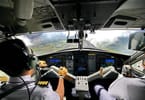Air as a mode of transportation, being highly effective and less time consuming, is witnessing a massive momentum currently. According to the World Bank statistics, nearly 4.233 billion people across the globe preferred air as a mode of transportation in 2018 in comparison to the previous year.
The consistently increasing numbers and the ease and convenience of air transportation have prompted the burgeoning world population to choose this mode, thereby robustly increasing air traffic. This allegedly calls for the need of air traffic management to ensure safe and sound air transits. The concept has now emerged to be more significant than ever, given the risks that inaccurate management may lead to.
An instance of how a loophole in the management could produce fatal results can be stated with 1985’s deadliest Japanese Airlines crash. The fundamental reason behind this crash had been accounted to the miscommunication between plane crew and air traffic controllers which almost left 505 passengers and approximately 15 crew members surviving to live.
Post this tragic accident, different aviation boards and governments amended initiatives and laws to take note of smooth air transits worldwide. Development of Greenfield airports by the Indian government is one of the major breakthroughs in this realm, that reiterates the necessity of air traffic management. Additionally, the world’s National Apprenticeship Training Scheme, NATS, contributed significantly to SESAR, a program that closely works with the concepts of making air travel safe, affordable, and manageable.
Air traffic management is a pivotal service established with an objective of supporting a safe, orderly, and expeditious flow of air traffic. Air traffic management is also affected by the intervention of ongoing technological upgradations in the field.
- For instance, the introduction of Time-Based Separation (TBS) at Heathrow Airport, UK in 2016 is evidently a drastic move signifying the technological advancement in air traffic management. The technology allows air traffic controllers to dynamically manage the separation between arriving aircrafts dependent on prevailing wind conditions.
- Elaborating further on technological advancements, NASA on October 2018, presented its new air traffic management technology- Flight Deck Interval Management, to the Federal Aviation Administration. This technology is expected to help air traffic controllers and pilots efficiently manage time and safety between airplanes landing on runway.
- Industry conglomerates have put their best foot forward to develop technologies and systems which would contribute towards air traffic safety. In this regard, Honeywell International, a prominent name in air traffic management business, introduced NAVITAS, an IoT supporting technology. NAVITAS collects and organizes real-time data to provide a bird’s eye view across air traffic control enabling insight sharing amid the airport authorities.
The Asia Pacific is also depicting notable signs of bringing about developments in air traffic management market. This is attributable to the burgeoning air passenger traffic and penetrating aviation industry across region. Numerous studies have claimed that the region is experiencing unprecedented growth in aviation sector, which would help APAC surge far ahead in terms of air travel. Indeed, it may be at par with Europe and North America combined, by the end of 2030, paving way for development in air traffic control and management.
Although air traffic management has been termed as a one-stop solution for all air travel pertaining issues, there are some challenges that have somehow had an impact on the smooth management of air traffic. One of these is the drastically changing climatic condition.
Changing climatic conditions could shift demand and create pressure on the capacity of airport network, leading to a threat to infrastructure and daily operations. However, various industry players are putting in efforts on developing systems which could help the airport authorities have control over traffic and airplane management while abiding to stringent governmental aviation laws.
With technology being the need of the hour, the introduction of remote air traffic control techniques could prove to be a breakthrough for air traffic management industry in the future. Making use of data networks to transfer images and data digitally, remote ATC would significantly change the face of industry in the upcoming years. Not to mention, large scale technological deployments are also likely to bring about a revolution in air traffic management market.
WHAT TO TAKE AWAY FROM THIS ARTICLE:
- With technology being the need of the hour, the introduction of remote air traffic control techniques could prove to be a breakthrough for air traffic management industry in the future.
- Although air traffic management has been termed as a one-stop solution for all air travel pertaining issues, there are some challenges that have somehow had an impact on the smooth management of air traffic.
- For instance, the introduction of Time-Based Separation (TBS) at Heathrow Airport, UK in 2016 is evidently a drastic move signifying the technological advancement in air traffic management.






















